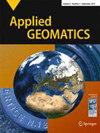Quantifying Aboveground Grass Biomass Using Space-Borne Sensors: A Meta-Analysis and Systematic Review
IF 2.3
Q2 REMOTE SENSING
引用次数: 0
Abstract
Recently, the move from cost-tied to open-access data has led to the mushrooming of research in pursuit of algorithms for estimating the aboveground grass biomass (AGGB). Nevertheless, a comprehensive synthesis or direction on the milestones achieved or an overview of how these models perform is lacking. This study synthesises the research from decades of experiments in order to point researchers in the direction of what was achieved, the challenges faced, as well as how the models perform. A pool of findings from 108 remote sensing-based AGGB studies published from 1972 to 2020 show that about 19% of the remote sensing-based algorithms were tested in the savannah grasslands. An uneven annual publication yield was observed with approximately 36% of the research output from Asia, whereas countries in the global south yielded few publications (<10%). Optical sensors, particularly MODIS, remain a major source of satellite data for AGGB studies, whilst studies in the global south rarely use active sensors such as Sentinel-1. Optical data tend to produce low regression accuracies that are highly inconsistent across the studies compared to radar. The vegetation indices, particularly the Normalised Difference Vegetation Index (NDVI), remain as the most frequently used predictor variable. The predictor variables such as the sward height, red edge position and backscatter coefficients produced consistent accuracies. Deciding on the optimal algorithm for estimating the AGGB is daunting due to the lack of overlap in the grassland type, location, sensor types, and predictor variables, signalling the need for standardised remote sensing techniques, including data collection methods to ensure the transferability of remote sensing-based AGGB models across multiple locations.利用星载传感器量化地上草生物量:荟萃分析和系统综述
最近,从成本挂钩到开放获取数据的转变导致了对估算地上草生物量(AGGB)算法的研究如雨后春笋般涌现。然而,缺乏对已实现的里程碑的综合或方向,或者缺乏对这些模型如何执行的概述。这项研究综合了几十年的实验研究,以便为研究人员指明已经取得的成就、面临的挑战以及模型的表现。从1972年到2020年发表的108项基于遥感的AGGB研究的结果表明,大约19%的基于遥感的算法在大草原上进行了测试。观察到年度出版物产量不均衡,大约36%的研究产出来自亚洲,而全球南方国家的出版物很少(10%)。光学传感器,特别是MODIS,仍然是AGGB研究的主要卫星数据来源,而全球南方的研究很少使用像Sentinel-1这样的有源传感器。与雷达相比,光学数据往往产生较低的回归精度,在研究中高度不一致。植被指数,特别是归一化植被指数(NDVI),仍然是最常用的预测变量。预测变量如草地高度、红边位置和后向散射系数产生一致的精度。由于草地类型、位置、传感器类型和预测变量缺乏重叠,决定估算AGGB的最佳算法是艰巨的,这表明需要标准化的遥感技术,包括数据收集方法,以确保基于遥感的AGGB模型在多个地点的可移植性。
本文章由计算机程序翻译,如有差异,请以英文原文为准。
求助全文
约1分钟内获得全文
求助全文
来源期刊

Applied Geomatics
REMOTE SENSING-
CiteScore
5.40
自引率
3.70%
发文量
61
期刊介绍:
Applied Geomatics (AGMJ) is the official journal of SIFET the Italian Society of Photogrammetry and Topography and covers all aspects and information on scientific and technical advances in the geomatics sciences. The Journal publishes innovative contributions in geomatics applications ranging from the integration of instruments, methodologies and technologies and their use in the environmental sciences, engineering and other natural sciences.
The areas of interest include many research fields such as: remote sensing, close range and videometric photogrammetry, image analysis, digital mapping, land and geographic information systems, geographic information science, integrated geodesy, spatial data analysis, heritage recording; network adjustment and numerical processes. Furthermore, Applied Geomatics is open to articles from all areas of deformation measurements and analysis, structural engineering, mechanical engineering and all trends in earth and planetary survey science and space technology. The Journal also contains notices of conferences and international workshops, industry news, and information on new products. It provides a useful forum for professional and academic scientists involved in geomatics science and technology.
Information on Open Research Funding and Support may be found here: https://www.springernature.com/gp/open-research/institutional-agreements
 求助内容:
求助内容: 应助结果提醒方式:
应助结果提醒方式:


